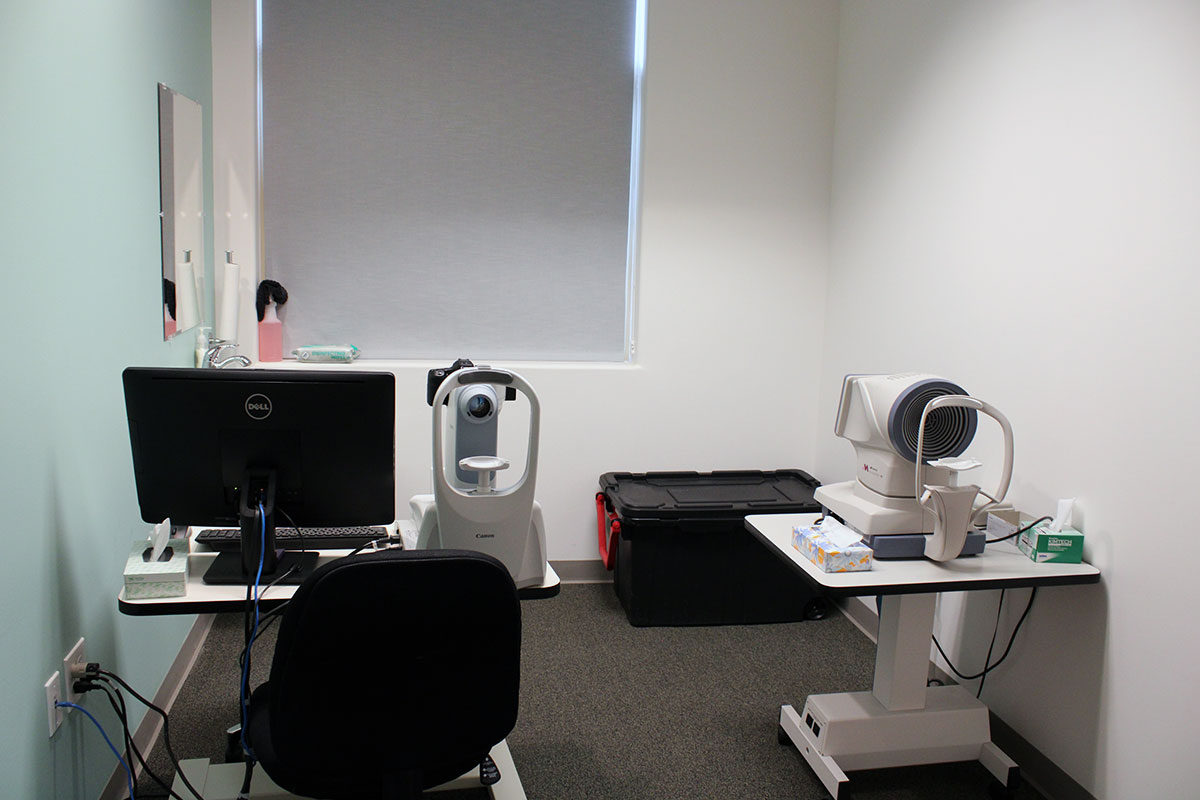Latest In Diagnostic Technology
Corneal
Mapping
Call Us
Hours
Location

Contact Us To Schedule Your Appointment
Corneal mapping, also known as corneal topography, is a diagnostic procedure used to measure the curvature and shape of the cornea, which is the clear outer layer of the eye. This procedure utilizes computerized technology to produce a three-dimensional map of the cornea’s surface, allowing eye care professionals to better diagnose and treat a wide range of eye conditions.
The cornea is responsible for refracting light that enters the eye, and any irregularities in its shape can cause vision problems such as astigmatism, nearsightedness, and farsightedness. Corneal mapping is a non-invasive procedure that provides detailed information about the cornea’s shape, allowing eye care professionals to diagnose and treat these conditions more effectively.
Aladdin Biometer with Corneal Topography
At Eyecare Center of Ken Caryl in Littleton, CO, we are proud to offer the latest advancements in eye care technology, including the Aladdin Biometer with Corneal Topography. The Aladdin Biometer with Corneal Topography combines several tests into one streamlined process, making it a convenient and efficient option for patients. During the exam, the device quickly and painlessly measures the shape and thickness of the cornea, as well as other important eye metrics such as axial length and anterior chamber depth.
This information is critical for diagnosing and managing conditions like cataracts, glaucoma, and refractive errors such as myopia, hyperopia, and astigmatism. Additionally, the Aladdin Biometer with Corneal Topography can be used to monitor changes in the eyes over time and ensure that treatments are effective.
What is corneal topography used for?
Corneal mapping is a useful tool for a variety of eye care applications.
- It is commonly used in the pre-operative evaluation of patients who are considering LASIK or other refractive surgeries. The information provided by corneal mapping helps the surgeon to determine the optimal surgical approach and improve the accuracy of the procedure.
- Corneal mapping is also used in the fitting of contact lenses. The detailed map of the cornea provided by this procedure enables eye care professionals to select the best type of contact lens for each individual patient, ensuring a comfortable and effective fit.
- In addition, corneal mapping is a valuable tool in the diagnosis and management of corneal diseases, such as keratoconus, which is a progressive thinning and bulging of the cornea. The 3D map of the cornea provided by corneal mapping allows eye care professionals to monitor the progression of the disease and develop appropriate treatment plans.
What to expect when getting a corneal topography scan
Getting a corneal topography scan is non-invasive and painless. Nothing touches your eyes at any time. You will be seated in front of the corneal topographer and asked to stare at a fixed target inside the machine while pictures of your eyes are taken. The scan only takes a few seconds to complete.
The corneal mapping process involves shining a light onto the cornea and recording its reflection with a special camera. The camera captures a series of images that are then analyzed by computer software to create a detailed 3D map of the cornea. The resulting map shows the curvature and shape of the cornea, and any irregularities or abnormalities can be identified.
Should corneal mapping be conducted, your eye doctor at the Eyecare Center of Ken Caryl will review the digital map of your cornea with you during your exam.
